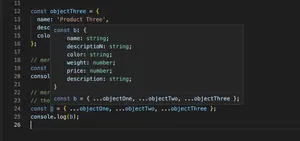Introduction
TypeScript enriches JavaScript by adding types and brings tooling support for HTML manipulation. This guide delves into the integration of HTML <textarea> elements with TypeScript, covering from basics to advanced concepts with clear code examples.
Understanding HTML Textarea
The <textarea> element in HTML provides a multi-line plain-text editing control useful for gathering user input or presenting multi-line strings. It supports various attributes like rows, cols, and placeholder, and can be integrated with JavaScript and TypeScript to handle user interactions programmatically.
Basic Example
<textarea id='myTextarea'></textarea>
<script>
const textarea = document.getElementById('myTextarea');
textarea.value = 'Initial text value';
</script>Introduction to TypeScript
TypeScript is a superset of JavaScript that compiles down to plain JavaScript. It provides static typing, making the development process more reliable and error-prone with better tooling such as code completion and refactoring.
Basic TypeScript and Textarea Interaction
const textarea: HTMLTextAreaElement = document.getElementById('myTextarea') as HTMLTextAreaElement;
textarea.value = 'Text set through TypeScript';Advanced Type Safety
To ensure the HTML element we query is indeed a <textarea>, TypeScript allows us to define the exact type of the queried element, enhancing code maintainability and robustness.
const textarea = document.getElementById('myTextarea');
if (textarea instanceof HTMLTextAreaElement) {
textarea.value = 'Typing ensures this is a textarea';
}Handling Events with TypeScript
Handling user interactions with <textarea> becomes more predictable with TypeScript. Event types such as InputEvent or FocusEvent can be leveraged to create robust event listeners.
Example: On Input Event
const textarea = document.getElementById('myTextarea') as HTMLTextAreaElement;
textarea.addEventListener('input', (event: InputEvent) => {
console.log(`New value: ${textarea.value}`);
});Enhancing Functionality with TypeScript Interfaces and Types
Interfaces in TypeScript can define the expected properties of textarea related objects, making the components and their usage clear and predictable.
Validating Textarea Content
interface TextareaValidator {
isValid(content: string): boolean;
}
class CommentValidator implements TextareaValidator {
isValid(content: string): boolean {
return content.length > 0 && content.length <= 200;
}
}
const validator: TextareaValidator = new CommentValidator();
const textarea = document.getElementById('myTextarea') as HTMLTextAreaElement;
textarea.addEventListener('input', () => {
const contentIsValid = validator.isValid(textarea.value);
// Do something with the validation result
});Working with TypeScript Generics and <textarea>
TypeScript generics can be used to create reusable, modular and type-safe code when working with textareas. For instance, you may want to standardize the way you handle stateful input components.
Stateful Textarea Component
function createStatefulTextarea<T>(initialValue: T): [() => T, (newValue: T) => void] {
let value = initialValue;
const getValue = () => value;
const setValue = (newValue: T) => { value = newValue; };
return [getValue, setValue];
}
const [getText, setText] = createStatefulTextarea<string>('');
const textarea = document.getElementById('myTextarea') as HTMLTextAreaElement;
textarea.addEventListener('input', () => setText(textarea.value));Integrating Textarea with TypeScript Utility Types
TypeScript’s utility types like Partial, Readonly, etc., can further enhance the development experience by providing additional type control over the textarea state management and component properties.
Optional Textarea Features
type TextareaFeatures = {
maxLength: number;
resizable: boolean;
};
type OptionalTextareaFeatures = Partial<TextareaFeatures>;
const features: OptionalTextareaFeatures = { resizable: false };Conclusion
Understanding and using <textarea> with TypeScript’s type system can greatly improve your web forms’ behavior and reliability. By meticulously defining types for DOM elements and event listeners, you can catch errors early and ensure more maintainable and clear code. As shown, TypeScript provides a robust framework for building complex, interactive forms with better predictability and developer ergonomics.
